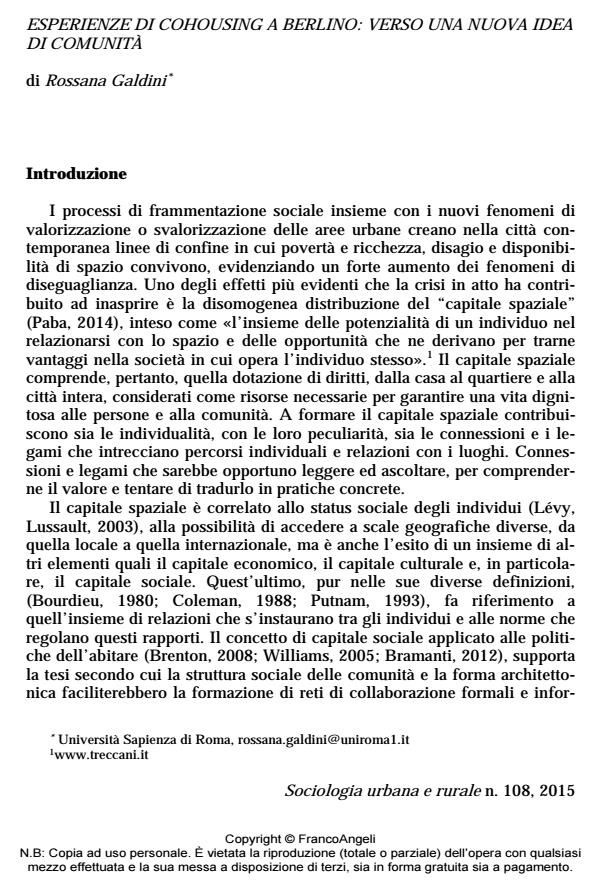Cohousing Experiences in Berlin: Towards a New Community Idea
Journal title SOCIOLOGIA URBANA E RURALE
Author/s Rossana Galdini
Publishing Year 2016 Issue 2015/108
Language Italian Pages 16 P. 101-116 File size 61 KB
DOI 10.3280/SUR2015-108007
DOI is like a bar code for intellectual property: to have more infomation
click here
Below, you can see the article first page
If you want to buy this article in PDF format, you can do it, following the instructions to buy download credits

FrancoAngeli is member of Publishers International Linking Association, Inc (PILA), a not-for-profit association which run the CrossRef service enabling links to and from online scholarly content.
The social fragmentation processes, the increasing cultural diversity, the need to reconfigure collective and individual identities promote reflection on housing and sharing practices related to new ways of living. The co-housing, as well as outlining new housing policies, seems to be an opportunity to propose social and generational mix among residents of neighborhoods and to rethink the city according to a new concept of urbanity. The article proposes a reflection on some experiences in Germany, on the lines of orientation, verifying their validity, the critical issues and their possible transferability in the Italian context.
Keywords: Fragmentation, Cohousing, Social Mix, Cohesion, Etereogenity, Community
Rossana Galdini, Esperienze di cohousing a Berlino: verso una nuova idea di comunità in "SOCIOLOGIA URBANA E RURALE" 108/2015, pp 101-116, DOI: 10.3280/SUR2015-108007